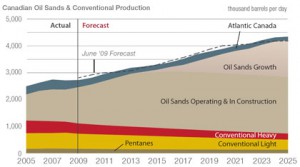BLOG ENTRY: Science Museum Visit
Introduction
Visiting the Boston Science Museum offered the opportunity for the class to build upon our knowledge of sustainable energy. Instead of a lecture, we utilized different tools at the varying exhibits to further enhance our understanding of the material and learn about other new technologies. Joined by Rebecca, I was able to enjoy the hands-on learning experience to the fullest extent possible!
Catching the Wind
The wind energy exhibit was incredibly interesting and provided a wealth of information. While it’s often a core energy source debated as the US works to improve its national energy policy, understanding of how we actually generate the power from the turbines is sometimes limited.

The first tool we interacted with is a wind generator that highlighted the amount of speed needed to generate power (shown above). According to the diagram, only 5-12mph speeds are needed to begin wind energy generation. It felt lighter than what we had felt outside when coming into the museum! Furthermore, the exhibit pointed out that wind energy is actually a form of sun energy. The uneven distribution of heat from the sun onto the planet causes the warm air to rise in some places, which is then replaced with cooler air. This phenomenon creates wind, which we use for our energy.
Further, a second tool put on display were gears that highlighted the amount of power that can be generated. The large rotation of big gears allowed the smaller gears to generate more electricity! This same concept is applied to different wind turbine designs, such as the very-efficient Proven 6 model wind turbine.
Energize!
The second exhibit we visited was centered on an analysis of solar energy. Sometimes linked together with wind power in the great energy debates, the exhibit provided a wide range of hands-on learning tools. Further, it also focused on other energy sources and the need for a diversification of energy sources. This provided a realistic analysis of what can be done to create a cleaner, more-efficient power supply.

The most interactive tool that I used (shown above) was simple: Power a city using a set number of energy sources. However, the amount of environmental destruction and the amount of energy produced had to be balanced. If the energy plan was too one-sided, the model reset itself. If a viable energy solution was created, the city above the model would light up. As much as I wanted a city that relied fully on renewable energy, I quickly realized the city was never going to be powered! I instead created a balanced energy plan that was green and realistic. This tool helped refocus my views on energy sources to be more realistic with current energy demand.
Another tool available allowed us to shine light on different parts of a solar house, and there was a measuring tool provided to indicate how much power was being produced. Different parts of the house would receive the light at different angles, and there were objects that could be used to cover parts of the solar panels. This tool underscored the importance of a reliable, steady amount of solar light for this energy source to be a sizable producer. Without a means to store the energy, it would be impossible to fully utilize solar power to its greatest potential. However, with technologies moving forward in that area, that obstacle may be tackled soon!
Nanotechnology
The nanotechnology exhibit showed how far we have come in terms of using atoms as a means to produce usable goods. From cancer treatments to future solar cells, nanotechnology offers a pathway to greater efficiency and life-saving technologies. Further, it’s already being utilized today to enhance our daily lives.
The biggest information piece I got during this exhibit is the potential nanotechnology has to dramatically change cancer treatment. According to the diagram, future cancer treatments might be able to use tiny gold nanoshells and infrared light to fight tumors. Further, there is hopes that this technology could be used cure a wide range of other illnesses that have been difficult to address!

A quote displayed (shown above) in the exhibit captures the core idea: “Nanotechnology allows us to build things the way nature does-Atom by atom.” This area of research unlocks countless opportunities for advanced technological development. It’s used already in sunblock and in computer chips, so it’s going to be interesting (and fun) to see where it heads next!
Conserve at Home
The Conserve@Home exhibit opened my eyes to the amount of waste that’s in every house in this country! More than ever, we need to focus on the three key concepts highlighted in this exhibit: Reduce, reuse, and recycle.

I spent much of my time in this exhibit shocked by the amount of power a hair dryer uses! Yes, a hair dryer! A tool (shown above) provided in the exhibit related draining water to the amount of energy drained through every-day house appliances. The hair dryer, at 1,000 watts, drained the energy source incredibly fast. It made me feel rather guilty for how much time I spend on my hair!
This exhibit also focused on providing the information needed for individuals to make better decisions. For example, diagrams that showed how water bottles could be used to make bridges and jackets underscored the absolute importance of continuous recycling of plastic. Further, an energy audit display showing leakage of heat from a home pointed out the importance of insulation and energy efficient building codes.
Conclusion
The visit to the Boston Science Museum gave us a chance to learn about sustainability and future technologies outside of the classroom. I had not gone in many years, so this was definitely a refreshing and fun experience! The information provided will allow me to make better decisions about my energy usage in the future.














Recent Comments